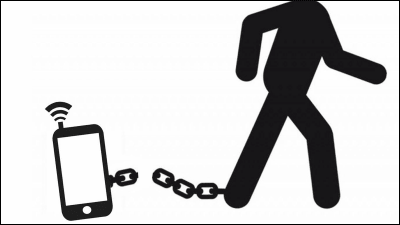What exactly is the 'IMEI' number assigned to smartphones and tablets?

Mobile devices such as mobile phones are set with an identification number called IMEI (International Mobile Equipment Identity), which uniquely identifies the device and allows it to receive various services and prevent theft. Tedium, an IT news site, explains what this IMEI number is in the first place.
Answering Every Question You Have About IMEI Numbers
IMEI is a 15-digit number intended to uniquely identify a mobile phone. When mobile phones first appeared in the 1990s, it was made mandatory in Europe to set a 'unique and manageable code' on mobile phone terminals in anticipation of cases where very expensive mobile phones were stolen and misused, and the IMEI specification was developed by the GSM Association , an industry group of mobile phone manufacturers and telecommunications carriers.
Since 2000, IMEIs have been assigned and managed by the GSM Association. Today, IMEIs are used for a variety of purposes, including anti-theft, device tracking, and service provisioning.

by
The IMEI consists of the following information:
1. Issuer
The first two digits of the IMEI indicate the issuing authority and are the ID of the organization approved by the GSM Association. For example, for mobile phones manufactured and approved in China, the first two digits are '86'. For devices manufactured in various countries around the world, such as the iPhone and Google Pixel, the first two digits are set to '35'.
2: Type Allocation Code (TAC)
The next six digits are assigned as a TAC, an identifier to identify the type of device. TAC is a number managed by the GSM Association and is used by manufacturers to manage inventory and quality, and by carriers to keep track of the types of devices on their networks. According to the GSM Association, despite the large number of devices being manufactured each year, there has been no significant increase in the number of TACs. This indicates that while the number of devices sold is increasing, the number of device models is not. In addition, in the case of IoT devices of the same model, millions of units are manufactured, so one model may be assigned multiple TACs.
3: Serial code
The six digits following the TAC are the serial code, a unique number used to identify a specific device within the same model. This serial code allows manufacturers to track individual devices and provide quality control and compensation services, and allows carriers to identify devices and resolve network issues. The serial code also plays an important role in the event of theft or loss of a device. By identifying the device, the stolen or lost device can be blocked and prevented from accessing the network, preventing unauthorized use of the stolen device.
4: Check digit
The last digit of the IMEI is a check digit used to validate the previous 14 digits. The IMEI check digit is calculated using an algorithm called ' Luhn ', and when a device connects to a mobile network, the network uses Luhn to validate the remaining 14 digits of the IMEI. If the result does not match the check digit, the IMEI is considered invalid and the device is denied access to the network.

by
Because the IMEI is a unique number, it is possible to track the location and usage of the device, which can be useful in criminal investigations, but can also lead to privacy violations.
Additionally, IMEIs can be altered or forged by technically savvy individuals, and although IMEI allocation is left to the discretion of the manufacturer, there have been reports of some manufacturers assigning the same IMEI to a large number of devices without proper IMEI allocation.
In addition, although the IMEI is basically based on the issuing authority code and TAC managed by the GSM Association, the specifications and management systems differ in some countries and regions, and it has been pointed out that legal restrictions against IMEI tampering and counterfeiting are insufficient in some countries and regions.

By Kai Hendry
Industry groups such as the GSM Association are working to improve the use and management of IMEIs, and governments are also working to develop laws to prevent unauthorized use of IMEIs. IMEIs are an essential part of modern mobile phones, and resolving the issues and building a more reliable identification system is essential for the healthy development of the mobile industry, Tedium said.
Related Posts:
in Hardware, Smartphone, Posted by log1i_yk







